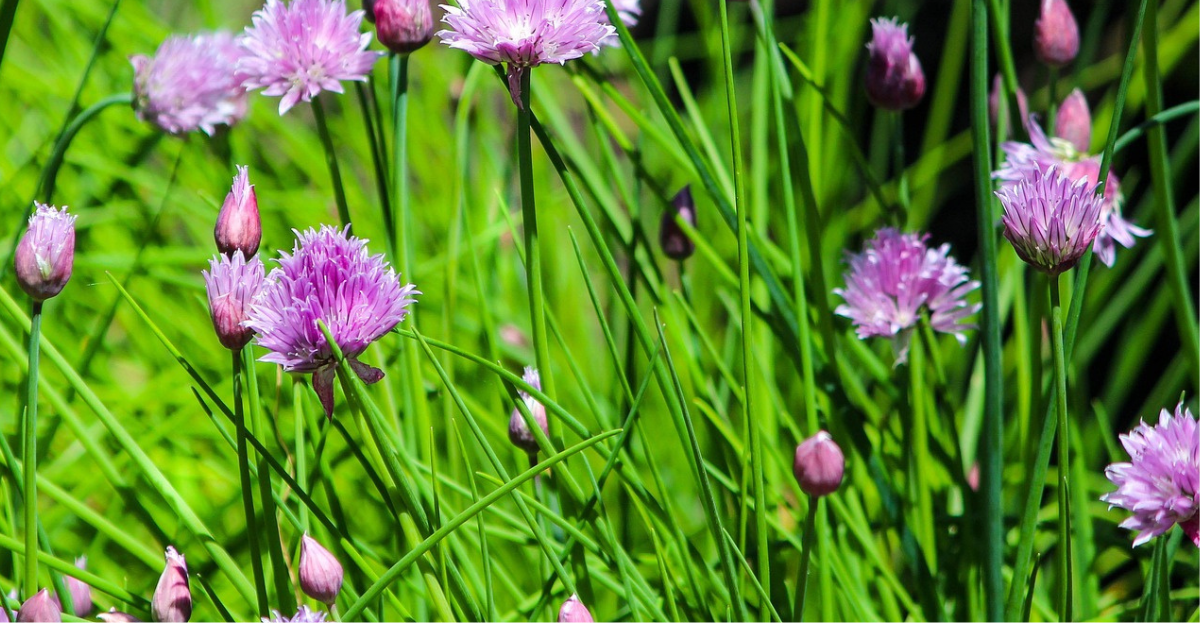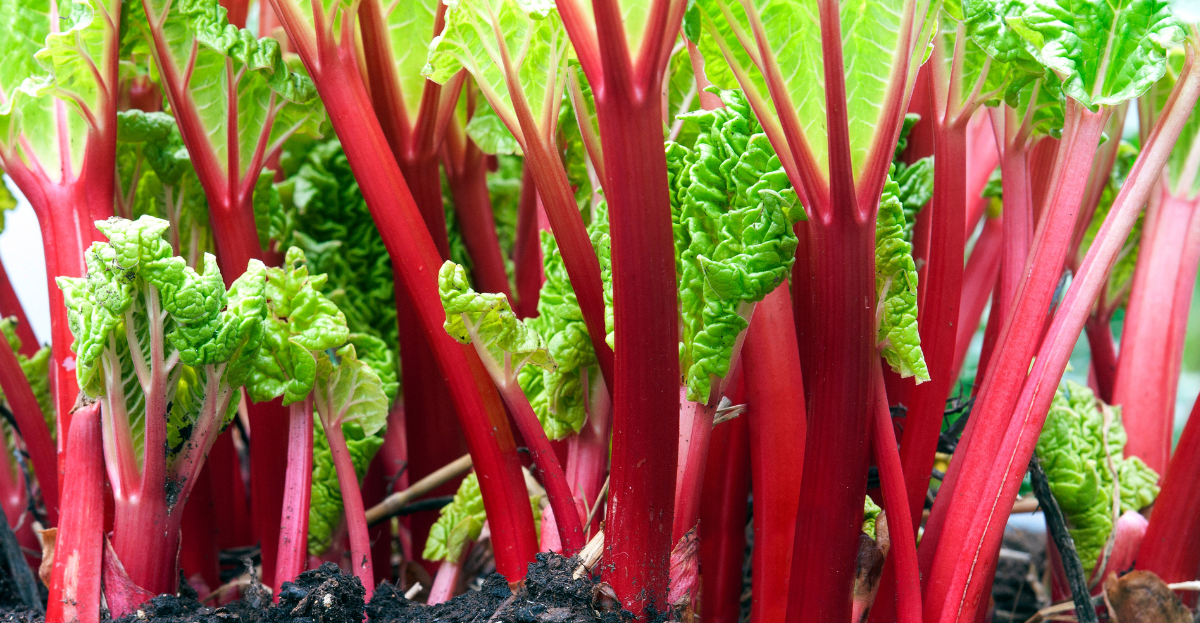20 Perennial Vegetables to Grow for a Low-Maintenance, High-Yield Plot
Growing perennial vegetables means planting for the long haul. These hardy crops provide harvests for years, need less care than annuals, and boost your garden’s health. Perfect for permaculture, no-dig gardens, or anyone wanting an easier, more sustainable plot.

1. Asparagus – Asparagus officinalis
Lifespan: 15–25 years
Growing Tips: Needs a sunny spot with rich, well-drained soil. Keep beds weed-free and mulch well. Don’t harvest until year 3 to allow strong root development.
Why grow it: Once established, asparagus spears burst forth every spring, early, delicious, and effortlessly.
2. Rhubarb – Rheum rhabarbarum
Lifespan: 10–20 years
Growing Tips: Loves cold winters and rich, moist soil. Divide crowns every 4–5 years to maintain vigour. Harvest stalks, but
never the leaves.
Why grow it: One of the earliest harvests of the year—and perfect for pies, compotes, and chutneys.
3. Kale (Perennial Varieties & Biennial Types)
Lifespan: 2–5 years (tree kale/tree collards even longer)
Growing Tips: Grow in full sun or partial shade. Regular picking keeps it productive. In no-dig systems, old roots resprout beautifully. Protect from cabbage white butterflies.
Why grow it: Extremely nutrient-dense and cold-hardy. Some varieties survive year-round with minimal fuss.
4. Jerusalem Artichoke – Helianthus tuberosus
Lifespan: Indefinite (spreads by tubers)
Growing Tips: Plant in a contained area—these will take over if given the chance! Full sun and poor soil are fine. Harvest after frost for sweeter tubers.
Why grow it: Tall, sunflower-like plants with edible tubers. Super easy, even in neglect.
5. Globe Artichoke – Cynara scolymus
Lifespan: 4–8 years (longer with care or division)
Growing Tips: Prefers full sun and fertile, well-drained soil. Mulch in winter or grow as a short-lived perennial in cold areas. Divide every few years.
Why grow it: Architectural beauty and delicious flower buds—what’s not to love?
6. Horseradish – Armoracia rusticana
Lifespan: 10+ years (but hard to remove once in)
Growing Tips: Very hardy. Grows best in moist, fertile soil but tolerates poor ground. Can become invasive—use root barriers or plant in a pot sunk into the ground.
Why grow it: Spicy, pungent flavour and near-zero maintenance.
7. Sorrel – Rumex acetosa
Lifespan: 4–8 years (but self-seeds readily)
Growing Tips: Likes moist soil and partial shade. Cut flower stalks to prolong leaf production. Dividing clumps rejuvenates plants.
Why grow it: A bright, lemony leaf that adds zip to salads and sauces—available early and late in the season.
8. Chives – Allium schoenoprasum
Lifespan: 3–10 years (divide every few years)
Growing Tips: Very forgiving. Grows in sun or part shade. Deadhead flowers to prevent self-seeding or just let them spread.
Why grow it: Tastes like a mild onion; perfect for topping eggs, potatoes, and soups.
9. Watercress – Nasturtium officinale
Lifespan: 2–3 years, often self-seeds
Growing Tips: Needs very moist soil or running water. Shade-tolerant. Grows well in boggy garden edges or containers with standing water.
Why grow it: Spicy, peppery, and packed with nutrients. Excellent in sandwiches and salads.
10. Garlic (perennial-style)
Lifespan: Indefinite if naturalised
Growing Tips: Plant cloves and let some mature naturally. Don’t harvest all—leave some in the ground to re-sprout. Scapes are a bonus crop!
Why grow it: Low-input, high-reward crop that mostly takes care of itself.

11. Bunching/Egyptian Walking Onions – Allium proliferum
Lifespan: Many years (self-renewing)
Growing Tips: Plant once, harvest forever. Divide clumps every few years for bigger yields. Allow top bulbs to drop if you want them to “walk.”
Why grow it: The ultimate no-maintenance onion—harvest greens, bulbs, and topsets.
12. Good King Henry – Chenopodium bonus-henricus
Lifespan: 5–10 years
Growing Tips: Prefers semi-shade and rich soil. Cut back flower stems to keep it leafy. Often slow to establish, but long-lived once settled.
Why grow it: A forgotten cottage garden classic. Nutritious leaves, asparagus-like shoots.
13. Lovage – Levisticum officinale
Lifespan: 5–15 years
Growing Tips: Grow in full sun or part shade. Rich soil and plenty of water yield giant growth. Divide every few years to invigorate.
Why grow it: One plant goes a long way—intense celery flavour, great in soups and broths.
14. Ramps/Wild Leeks – Allium tricoccum or ursinum
Lifespan: 10–20 years (slow to establish)
Growing Tips: Plant in rich, shady woodland soil. Mulch with leaf litter. Only harvest a few leaves per plant to preserve them.
Why grow it: Garlicky, savoury spring flavour. A gourmet crop that loves forest gardens.
15. Daylilies – Hemerocallis spp.
Lifespan: Decades
Growing Tips: Tolerates poor soils and drought. Full sun brings more blooms. Divide every 5–7 years to rejuvenate.
Why grow it: Every part is edible—buds, flowers, and tubers. Plus, stunning flowers.

16. Ostrich Fern – Matteuccia struthiopteris
Lifespan: 10–20+ years
Growing Tips: Shade-loving and moisture-hungry. Mulch with organic matter. Only harvest young fiddleheads before they unfurl.
Why grow it: Beautiful fern that doubles as a spring delicacy—rich in antioxidants.
17. Radicchio (as a perennial)
Lifespan: 2–3 years (with cut-and-come-again harvests)
Growing Tips: Cold-tolerant. Grows well in cool weather. Mulch in winter and harvest outer leaves as needed.
Why grow it: Bitter, bold, and colourful. Perfect grilled or tossed in salad.
18. Three-Cornered Leek – Allium triquetrum
Lifespan: Indefinite
Growing Tips: Likes damp, shady areas. Spreads by bulb and seed—harvest often to control. Great under trees or near hedges.
Why grow it: Mild garlicky greens when nothing else is growing. Beautiful white flowers, too.
19. Seakale – Crambe maritima
Lifespan: 10–15 years
Growing Tips: Prefers sandy, free-draining soil. Blanch in spring for sweet shoots. Protect from slugs when young.
Why grow it: Unusual, delicious, and highly ornamental. A Victorian kitchen garden staple.
20. Tree Collards – Brassica oleracea (perennial form)
Lifespan: 3–10 years
Growing Tips: Prefers mild winters and benefits from regular pruning. Propagate from cuttings. Needs staking in windy spots.
Why grow it: A year-round leafy green, especially in warm, frost-free climates.
Perennial vegetables aren’t just a novelty—they’re the backbone of sustainable gardening
With the right care, many will produce for decades, all while building soil, supporting wildlife, and feeding you with minimal effort.



